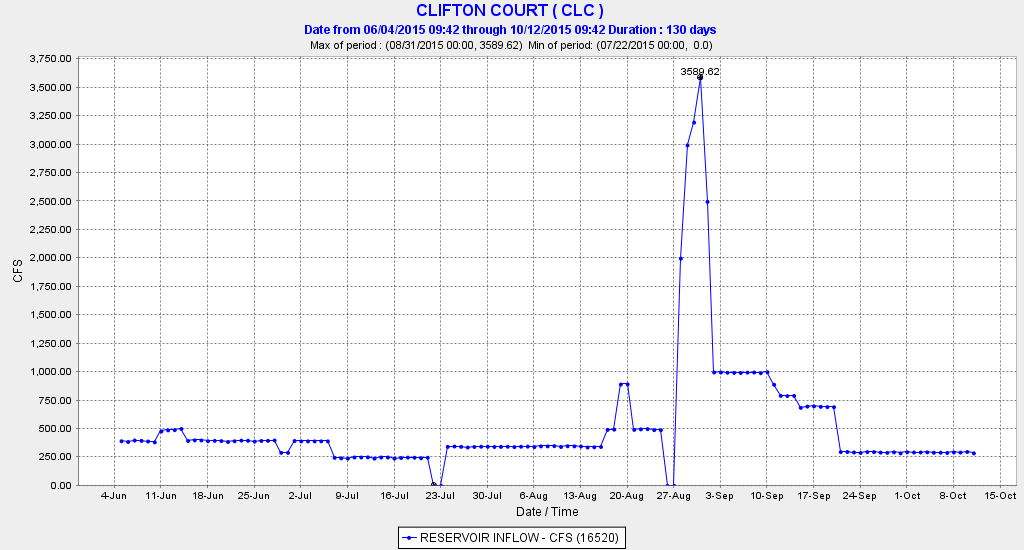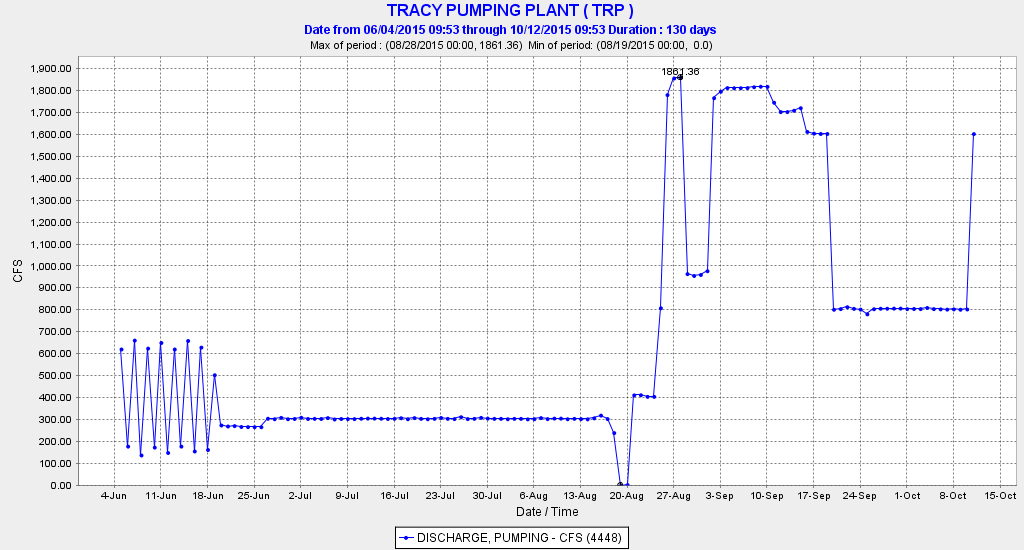A weekly survey by the US Fish and Wildlife Service1 targeting Delta smelt captured one Delta smelt in early August 2024 (Figure 1). It was the first and only Delta smelt caught this summer in that smelt-targeted survey in the Bay-Delta Estuary. A late April IEP juvenile fish survey (the 20-mm Survey) caught several juvenile Delta smelt in the same area (Figure 2).
What is unique about this location in Suisun Bay? In 2024 the low-salinity-zone (LSZ) has been located in Suisun Bay for most of the spring and summer, as Delta outflows have been maintained at 8,000-12,000 cfs (Figure 3). The LSZ is the critical spring-summer habitat of the Delta smelt (a salinity range related to high survival in the population). When the LSZ is in Suisun Bay, it generally remains within the maximum temperature tolerance of Delta smelt (70-72oF). When Delta outflow falls below about 7,000-8,000 cfs, the LSZ moves east into the warmer Delta. Delta water quality standards (D-1641) require a minimum outflow of 7,000 cfs in wetter years for this reason. When it is east in the Delta, the LSZ tends to have warmer water due to higher air temperatures. The Delta smelt biological opinions have a provision called “Fall X2” that requires extra Delta outflow in late summer to help ensure Delta smelt are west in Suisun Bay (Figure 4), where they have higher survival potential.
The LSZ does not occupy a large area – it is generally a small mixing zone where fresher water meets the saltier water. The LSZ moves up and down the estuary with the monthly and daily tidal cycles. The one smelt was caught in early August, when the LSZ happened to be at that net sampling location (Figure 5) because of the relatively high Delta outflows in summer of above-normal water year 2024. In contrast, much lower Delta outflows in summer of drought year 2022 brought saltier water to Suisun Bay (Figure 6), and the LSZ was upstream in the warmer lower Sacramento River channel of the Delta near Rio Vista (Figure 7).
In closing, there are a few Delta smelt left – but it is near the end of over five decades of population decline that has brought them single digits away from extinction (Figure 8). The cause in large part has been the devasting effects of low spring-summer Delta outflows in drier years that maintained the LSZ upstream of the Bay in the warmer Delta, where the smelt cannot survive. Efforts to protect the smelt in only in wetter years by requiring higher Delta outflows were positive, but requirements in wetter years alone are not enough: the smelt only live one year. The only option left is to maintain the 10,000-12,000 cfs Delta outflow in all years, raise the captured brood stock at UC Davis for release in the LSZ in the Bay, and hope the species can recover. The cost would be about 1 million acre-feet of water supply in the drier years over the summer.
The choice was made for us by DWR and in the soon-to-be-released US Fish and Wildlife Service updated biological opinion on the long-term effects of the state and federal water projects. The most recent opinion issued in 2019 stated the projects do not jeopardize the viability of the Delta smelt population. Now we seem intent on removing the one remaining lonely smelt. Just remember, the Delta smelt were supposed to be the “canary in the coal mine.”








- Enhanced Delta Smelt Monitoring, 2024 Phase 3 Preliminary Analysis, U.S. Fish and Wildlife Service, August 30, 2024 DRAFT ↩




















